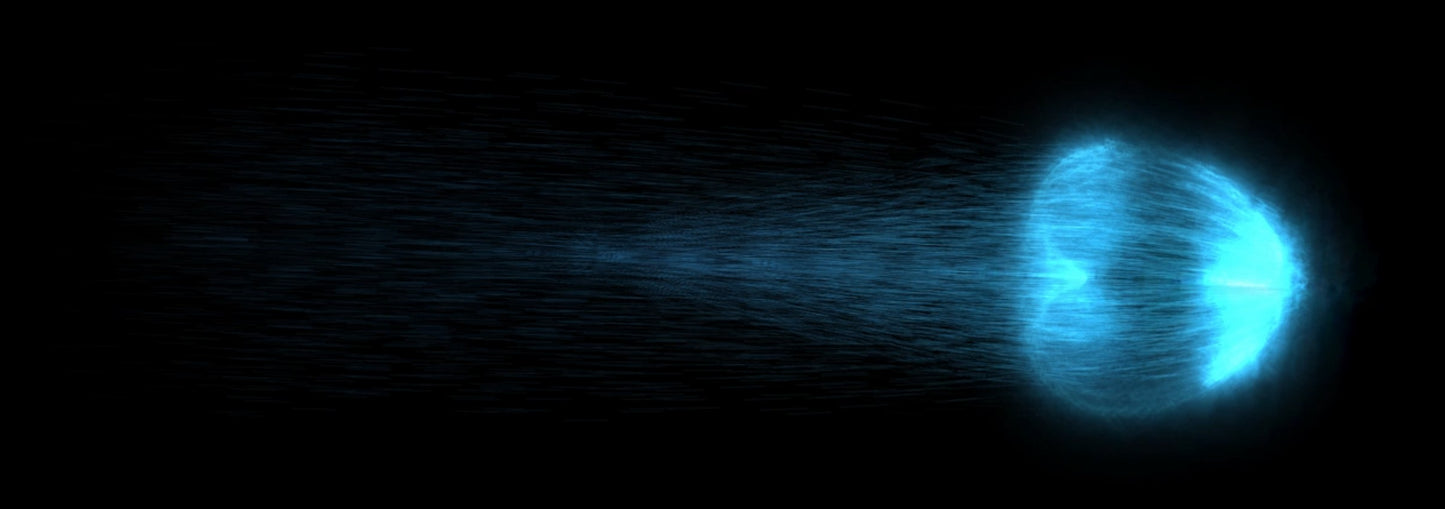What are the Hidden Variables of the Planck "Constant" and Is It "Constant"?
Although the Planck Constant may appear to be a constant there are hidden variables within the Planck Constant that give rise to it's value.
h = 6.62607015×10−34 (kg m^2/s) or (kg m^3) (m/s) / (m^2) or Kro * c / A
b = h / c = 2.21 x10−42 (kg m) or (kg m^3) / (m^2)
b = The Rate of Change of a Photon's Mass Density or Quantum Inertial Dipole Number Density Condensed within a Photon's Wave Packet Envelope Surface Area under force:
Vacuum Pressure and Force
The Photon experiences forces traversing the Massive Bulk of the Vacuum Quantum Dipole Particle Field due to both Quantum level Static and Dynamic Quantum Vacuum Pressure Forces.
STATIC FORCE(wavepacketenvelope) = PRESSURE(vacuum) * AREA(wavepacketenvelope)
Planck Constant Interpretation
The Planck 'Constant' h quantifies Rate of Change of Photon Mass Momentum Given it's Wavelength
The Velocity component of the Momentum can be removed from the Planck Constant to yield the Bożeon "Constant".
Hidden Variables of the Planck 'Constant
The Planck Constant has many hidden variables that when fully evaluated yields the value of h.
h = m N c kV / kA
b = m N kV / kA
b = m N kλ
kλ = kV/kA
where,
h = Planck "Constant"
c = Local Speed of Light
b = Bożeon "Not So Constant"
m = Mass of an Individual Bożeon (Quantum Inertial Dipole or QID) about 10^(-84) kg
N = Number of Bożeons condensed inside the Photon's Wave Packet Envelope Surface Area
kV = Volume of a Photon given it's wavelength λ
kA = Surface Area of a Photon's Wave Packet Envelope given it's wavelength λ
kλ = Volume of a Photon given it's wavelength kλ = kV / kA
λ = Wavelength of a Photons or it's Quantum Volume divided by it's Quantum Wave Packet Area (λ = kλ / k)
Bożeon "Constant" Interpretation
The Bożeon 'Constant' b essentially tells us that rate of change of the Total Mass of the Bożeons or Quantum Inertial Dipoles "N" swirling inside a Photons Wave Packet Envelope given a change in Wavelength.
The value of b will very with local vacuum ambient quantum inertial dipole mass density and vacuum pressure. The Planck Constant will also vary with local Vacuum Mass Density. Some people call this Dark Mass Density.
Quantum Mass of a Photon
Photon Mass Mphoton can be found by the follow equation.
Mphoton = h / cλ = b / λ (kg)
Photon Mass Mphoton can be found by multiplying the Mass of a Single Bożeon with the Number of Bożeons condensed inside the Photon.






